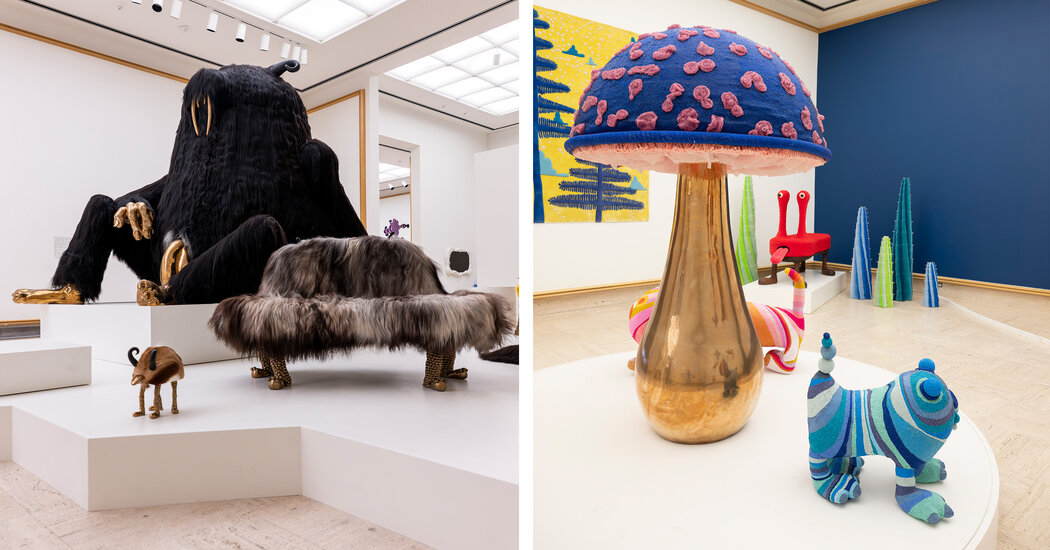Consider This
A Design Showroom in a Modernist Parisian Apartment
The antiques dealer Eric Touchaleaume was one of the first collectors to travel to Chandigarh, India, in search of the Modernist office chairs and desks that were designed by the architects Le Corbusier and Pierre Jeanneret for the planned city in the 1950s and are now among the most valuable vintage furniture pieces on the market. In 2000 he traveled to Brazzaville, the capital of the Republic of Congo, where he tracked down several of the French architect Jean Prouvé’s rare Maison Tropicale houses, prefabricated metal dwellings built in 1951 for tropical climates. Lately, Touchaleaume has been gathering Modernist rarities in his own 1920s townhouse in Paris’s 16th Arrondissement and his new showroom next door, both designed by the French architect Robert Mallet-Stevens. “My idea was to create the feeling of a collector’s apartment,” Touchaleaume says of the showroom, which he’s named Galerie 54. Among the objects “with provenance,” as he describes them, meaning most are from the estates of esteemed private collectors, is a wall-hung olive green rug with a border of galloping horses from 1930 by the French tapestry artist Jean Lurçat, made for the Polish American cosmetics scion Helena Rubinstein. Next to it, atop a gouged oak buffet by Jean Touret, is a white plaster lamp with a tilted woven wicker shade conceived to evoke the shape of an opium smoker’s headrest, designed by Salvador Dalí and the French interior designer Jean-Michel Frank for the Tunisian home of the French American socialites Jean and Violet Henson. “I have a fascination with the great collectors,” says Touchaleaume. “The story always comes first.” By appointment only, galerie54.com.
—Laura May Todd
Visit This
A Survey of the Haas Brothers’ Colorful Sculptures
“The uncanny valley,” a term coined by the roboticist Masahiro Mori in 1970, names the point at which a lifelike robot or doll crosses the threshold from cute to creepy and back again. The artists Simon and Nikolai Haas, twin brothers, have spent the past 15 years making a career in that space between the delightful and the eerie. In their world, a table raises its leg like a dog; a vessel comes with horns. Their aim, though, is neither to disturb nor repulse, but to seduce — to draw their audience into an intimate relationship with the surreal. “We’re essentially trying to get someone to feel empathy with an inanimate object,” says Simon. That playful seductiveness is on full display in their first major survey, “Haas Brothers: Uncanny Valley,” opening on Nov. 2 at Cranbrook Art Museum outside Detroit. In Cranbrook’s midcentury galleries, visitors will find Haas classics, like a mushroom whose cap is awash in violet and pink, alongside new “Accretion Paintings” (2024-25), in which layers of acrylic build on each other until the canvas seems to reach out into the room. “Haas Brothers: Uncanny Valley” will be on view at the Cranbook Art Museum from Nov. 2, 2025, through Feb. 22, 2026, cranbrookartmuseum.org; travels to New York; Austin, Texas; and Charlotte, N.C.
—James Draney
Wear This
A Line of Reimagined Moroccan Clothes, Now at La Mamounia in Marrakesh
The post Surreal Creatures Gather at Michigan’s Cranbrook Art Museum appeared first on New York Times.




